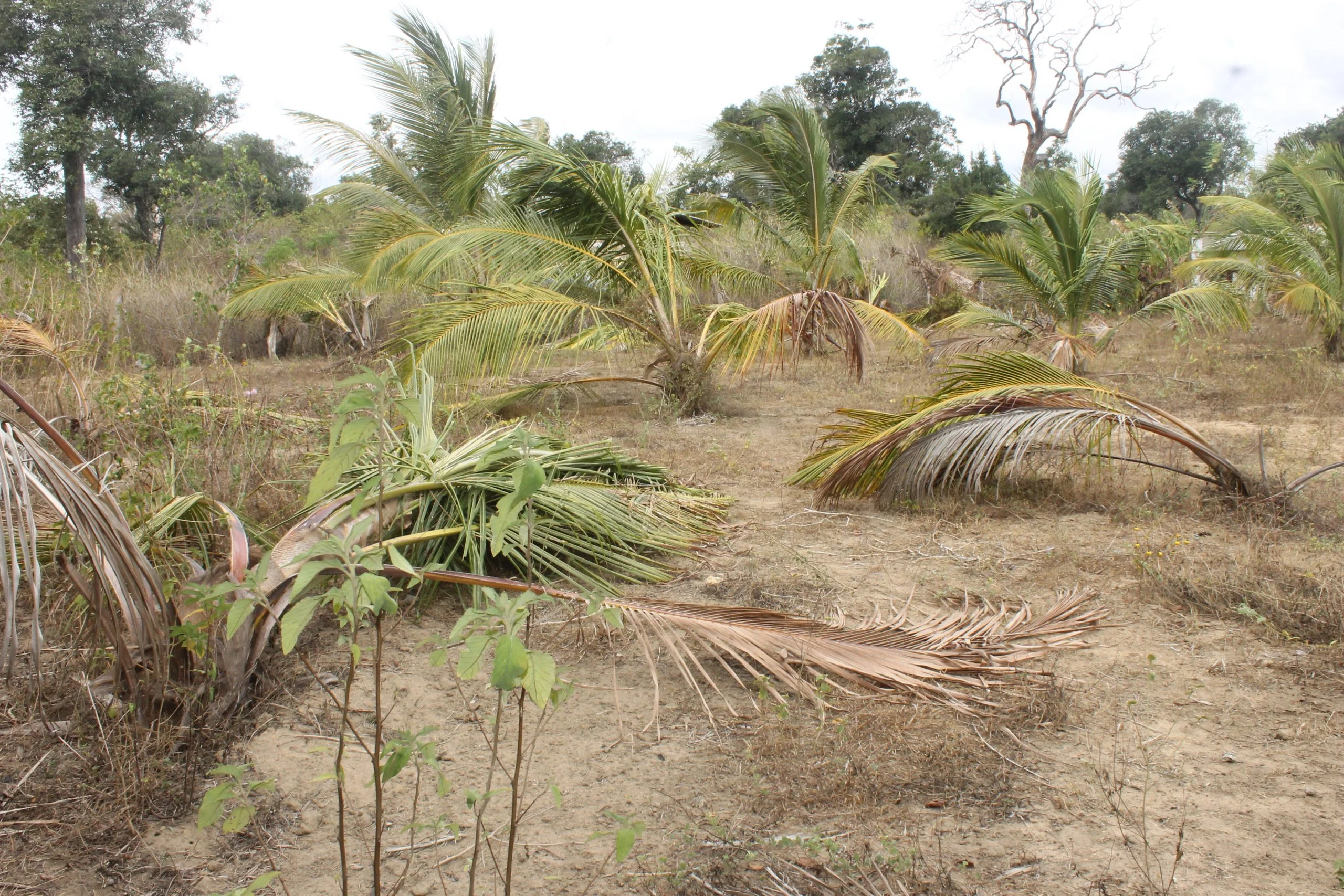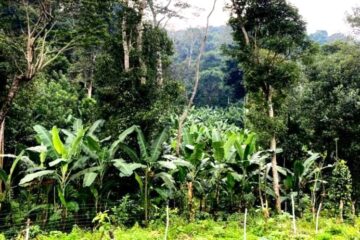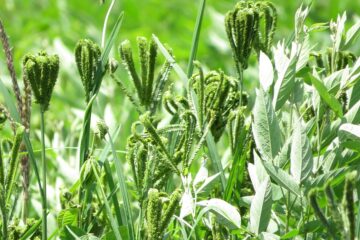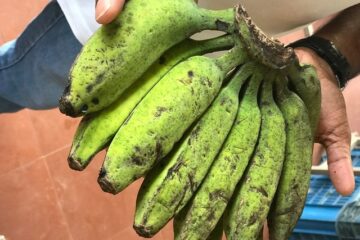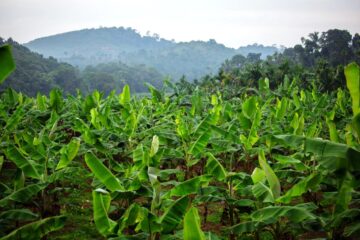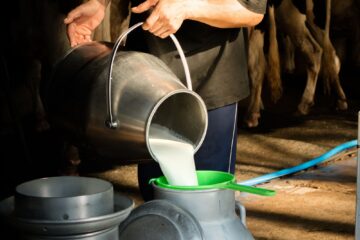Published in: February 2017
Due to the current drought conditions in Tamil Nadu, it has become challenging to protect long-term crops. Here, we discuss methods to safeguard coconut trees, a vital crop cultivated in all districts, from the ravages of drought.
Coconut trees have a low tolerance for drought and require a significant amount of water. They lack a taproot and have only fibrous roots, 80% of which are within a depth of 60 cm. These roots cannot absorb water from deeper soil layers, and the tree itself cannot store water, making it vulnerable to drought.
Coconut trees in regions with less than 1,000 mm of rainfall or areas experiencing over three months without rain are susceptible to drought. They are also affected when the ambient temperature exceeds 35 degrees Celsius and relative humidity drops below 50%.
A mature coconut tree produces one leaf and one spathe per month. Therefore, drought at any time of the year impacts the tree. Drought is a significant cause of fluctuations in coconut yield. It takes 2-3 years for a drought-affected coconut tree to recover fully.
During drought, the leaves of coconut trees wilt, turn yellow, lose strength, and hang down. Nuts and immature fruits drop off. Severe drought can cause leaves to dry out and trees to die, resulting in substantial economic losses for farmers.
The number of leaves on a coconut tree depends on the water it receives. Trees with adequate water produce 14 leaves annually, while those in water-scarce areas produce only 6-7 leaves. Severe drought halts growth entirely.
Only when there are more leaves will there be more spathes. Water scarcity affects spathes more than leaves. Trees producing 6-7 leaves due to drought will have only 4-5 spathes, and in extreme drought, no spathes at all.
One spathe contains 16 female flowers, 66% of which may drop due to drought. Rainfall and coconut yield are closely linked. A coconut tree requires 100 liters of water daily, with only 5-10% used for growth and the remaining 90-95% evaporating through leaf stomata.
Partially closing these stomata can reduce water loss. Some coconut varieties can partially close their stomata during drought. Here are methods to protect coconut trees from drought.
Creating Circular Basins
Most coconut roots spread within a radius of 1.8 meters around the tree. To retain moisture, create a circular basin with a radius of 1.8 meters and a depth of 20 cm around the tree. This helps maintain soil moisture effectively.
Mulching
Place 15-20 coconut leaves in the circular basin around the tree. Mulching reduces soil temperature by about 6 degrees Celsius at a depth of 20 cm.
Burying Coir Pith
Dig a circular trench 1.8 meters away from the tree, 50 cm deep and wide. Fill the trench with coir pith, fiber side up, and cover it with soil. About 200 coir pith blocks are needed per tree. Coir pith absorbs and retains rainwater, providing moisture during drought. Each block can absorb water six times its weight, protecting trees during dry periods.
Burying Coir Pith in Rows
In the rows between trees, dig trenches 2 meters wide and 50 cm deep. Layer coir pith, fiber side up, and cover with 5 cm of soil. Repeat to create three layers, leaving a 10 cm depression. This setup absorbs rainwater and supplies moisture to the trees. Each 100 blocks also provides 600 grams of potash.
Applying Pond Silt
In sandy and laterite soils where coconuts are commonly grown, adding pond silt to the circular basins helps retain moisture. Mix with decomposed coconut waste at 50 kg per tree. Pond silt adds clay, organic matter, and improves moisture retention, mitigating drought effects.
Increasing Potash Fertilization
Potash, containing 60% potash and 40% chlorine, enhances drought resistance by reducing water loss through leaves and maintaining leaf health. Apply 4 kg of potash per tree annually, split into two doses.
Recommended Fertilization
Apply 1.3 kg of urea and 2 kg of superphosphate per tree annually, split into two doses in July-August and December-January. Water after fertilizing in dry conditions. Adding 2 kg of common salt (sodium chloride) with potash is beneficial, as chlorine is vital for leaf cell rigidity and drought resistance.
Pruning Leaves
Coconut trees use only 10% of the water provided, with the rest evaporating through leaves. During severe drought, prune all but the top three leaves to conserve water.
Applying Biofertilizers
Vesicular-arbuscular mycorrhiza (VAM) fungi colonize coconut roots, extending into the soil to access nutrients like phosphorus and zinc beyond root reach, enhancing drought resistance. Apply 1 kg of VAM per acre mixed with compost.
Installing Drip Irrigation
Install drip irrigation around the tree at 4-6 points, 1 meter away from the trunk. Use 16 mm PVC pipes filled with coir pith, buried 30 cm deep. Drip water at 4 liters per hour through these pipes, ensuring water reaches the roots without evaporation.
Planting Drought-Resistant Varieties
Cultivate drought-tolerant coconut varieties to minimize drought impact. These varieties have waxy leaves that reduce water loss and reflect heat. Western Coast Tall, Java Giant, PG Tall, and Malaysian Tall are drought-tolerant varieties.
In Tamil Nadu, Eastern Coast Tall, Veppankulam 3, and Aliyar 1 and 3 varieties show good drought tolerance and yield.
J. Kathiravan, Agricultural Science Center, Hans Roever Campus, Vallikandapuram, Perambalur – 621 115.

